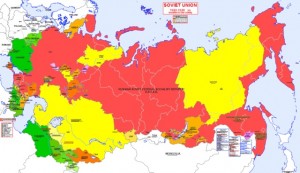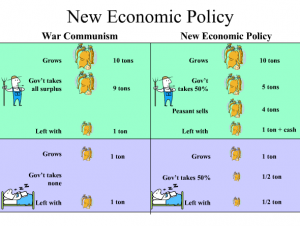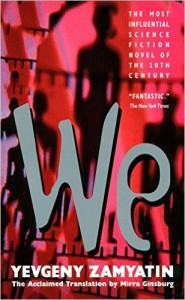The early nineteen twenties were a challenging time for the leaders of the new Soviet Union. Not only were they trying to learn how to lead a country while already being in control, they were also trying to find balance between all their internal contradicting ideas. The six main leaders were Lenin, Stalin, Bukharian, Trotsky, Zinoviev, Kamenev. Because of their different backgrounds and skill sets their ideas regarding the future of Soviet Union were very diverse. The two most powerful were Lenin and Stalin. One of Lenin’s last main writings detailed his feelings regarding his fellow associates strengths and weaknesses, specifically Stalin. Lenin feared Stalin would cause issues for the Soviet Union because he would abuse power.
Stalin and Lenin had contrasting ideas of how to create their new nation. This was especially true in their ideas regarding national policy.
In Stalin’s Concerning the Presentation of the National Question Stalin looks at the smaller nations that made up the Soviet Union and explored the idea of the National Question. Stalin believed that a nation was a group of people who had similar idea, a common language and way of life. Thus he believed that the smaller nations that made up the Soviet Union should have these things in common and more specifically that they should be like the big Russia.
In contrast Lenin’s On the Question of the Nationalities or of Autonomization in December of 1922. Lenin believed that big nations historically oppressed small nations and thus as a large nation Russia should create equal footing with its smaller counterparts by giving them more power. He thought they should let them control themselves to a certain extent. He thought Stalin was incorrect and that he should be publically punished.



